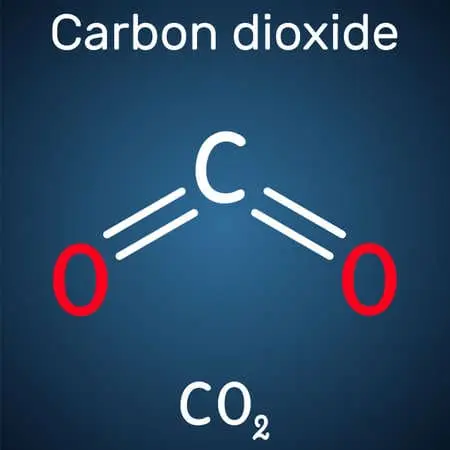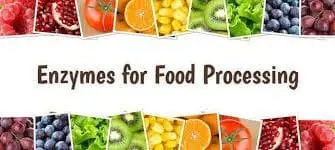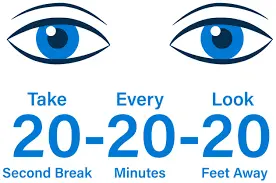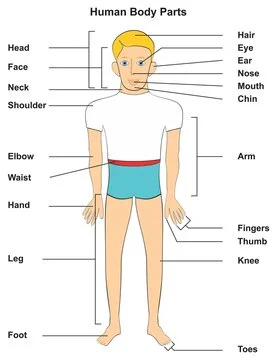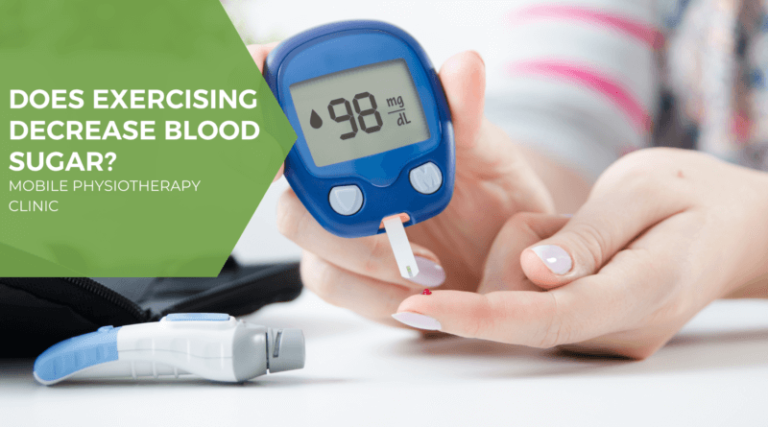Water Soluble Vitamins
Introduction
Water soluble vitamins are a group of 9 essential vitamins that play critical roles within the body to support optimal health and prevent disease. Unlike fat-soluble vitamins that can be stored in adipose tissues, water-soluble vitamins cannot be readily stored and are rapidly excreted in urine. This makes consistent dietary intake vital for maintaining healthy levels.
These vitamins are considered “water-soluble” because they can dissolve easily in water for quick absorption into blood and storage in body tissues. However, any excess is eliminated quickly via urine output. Because they are not stored in significant amounts, dietary consumption is needed regularly. Deficiencies can emerge in weeks to months if dietary intake becomes inadequate or absorption problems arise.
The water-soluble vitamins humans require are vitamin C and eight substances in the B vitamin complex: thiamine (B1), riboflavin (B2), niacin (B3), pantothenic acid (B5), pyridoxine (B6), biotin (B7), folate (B9) and cobalamin (B12). While all these vitamins serve distinct roles, they cooperate closely to support optimal health.
Vitamin C and the B complex vitamins work synergistically to help extract energy from foods through cellular metabolism pathways. They assist in the production of enzymes, digestive and stress response hormones, red and white blood cells, neurotransmitters, and genetic material.
Some play antioxidant roles to relieve oxidative stress implicated in chronic diseases. Deficiency in any of these vitamins can lead to symptoms ranging from fatigue, confusion, and digestive distress to anemia, birth defects, and severe neurological conditions if left untreated. Their water-soluble nature makes daily replenishment from wholesome dietary sources essential.
List of Water-Soluble Vitamins
Among the water-soluble vitamins are eight B vitamins and vitamin C:
- Vitamin C
- B1 – thiamine
- B2 – riboflavin
- B3 – niacin
- B5 – pantothenic acid
- B6 – pyridoxine
- B7 – biotin
- B9 – folic acid
- B12 – cobalamin
Roles and Benefits of Water-Soluble Vitamins
Vitamin C
- Essential for collagen production needed for the formation of connective tissues, wound healing, and gums
- Lack of vitamin C causes scurvy which results in bleeding gums, joint pain, and poor wound healing
- Potent antioxidant that reduces oxidative stress; may lower risk of chronic diseases like heart disease and cancer
- Enhances immunity by promoting white blood cell functions including phagocytosis and antibody production
- Improves iron absorption by aiding the conversion of iron into its usable ferrous form
- Antioxidant properties also support eye health and protect sensitive tissues from UV radiation damage
Thiamine (B1)
- Required to properly metabolize glucose for energy production within cells
- Necessary for nerve signal transmission and muscle contractions due to its role in nerve cells and fibers
- Supports normal heart health; deficiency can lead to enlargement of the heart
- Needed for proper brain functions as thiamine pyrophosphate is essential for cognition
- Deficiency negatively impacts the digestive system leading to constipation, nausea, appetite loss
- The key components of two major cofactors – FAD and FMN – essential for energy metabolism processes
- Necessary for breaking down fats, drugs, steroids, producing NADPH and glucose oxidation
- Essential for normal red blood cell counts and hemoglobin levels
- Needed for antibody production and activity of lymphocytes for immunity
- Promotes growth and reproduction of cells throughout the body
- Protects eye cells from UV light damage; prevents cataracts
Niacin (B3)
- Converted into NAD and NADP used by cells to extract energy from carbs, fats, and alcohol
- An essential component of redox reactions for DNA repair within cells after damage
- Regulates gene expression by acting as a ligand for transcription factors
- Increases good HDL cholesterol and decreases LDL cholesterol.
- Effective treatment for pellagra disease caused by niacin deficiency
Pantothenic Acid (B5)
- Fundamental component of coenzyme A (CoA) and acyl carrier protein (ACP)
- CoA is a cofactor in over 100 metabolic reactions including acetylation for energy production
- ACP is also needed to metabolize fatty acids for cell energy
- Necessary for biosynthesis of essential compounds like cholesterol, steroid hormones, heme
- Critical roles in brain and nerve function via acetylcholine and neurotransmitter synthesis
Pyridoxine (B6)
- Cofactor for over 100 enzyme reactions mostly for protein metabolism including transamination
- Needed to break down and release glucose from glycogen to maintain blood sugar
- Assists in decarboxylation reactions converting amino acids into amines
- Required by the body to produce the neurotransmitters including serotonin, dopamine, GABA
- Essential for hemoglobin formation immune cell production and functionality
Biotin (B7)
- Used as an essential cofactor for carboxylases involved in fatty acid synthesis and amino acid catabolism
- Needed for acetyl-CoA carboxylase which is vital in synthesis pathways for fatty acids
- Essential for the growth and proliferation of all cells throughout the body
- Necessary for normal functioning of RNA polymerase involved in DNA transcription
- Supports the health of hair, skin, and nails; deficiency causes hair loss and skin/nail abnormalities
- Boosts energy metabolism needed for the production of usable cellular energy (ATP)
- Critical one-carbon carrier for nucleotide biosynthesis vital for DNA and RNA production
- Rapidly dividing tissues like bone marrow and fetal development rely heavily on folate
- Along with B12, needed to form hemoglobin and normalize red blood cell counts
- Deficiency causes neural tube defects in developing fetus if insufficient maternal intake
- Vitamin B12, converts homocysteine to methionine, lowering the risk of cardiovascular disease
- Protects DNA from uracil misincorporation and chromosomal breakages
Cobalamin (B12)
- Needed for cellular methylation processes impacting DNA, RNA, dopamine, lipids
- Essential for myelin synthesis and normal neuronal function to prevent neuropathy
- Key role in hemoglobin synthesis to support red blood cell production
- Needed along with folate to synthesize DNA nucleotides properly
- Protects against elevated homocysteine levels thereby reducing heart disease risk
- Deficiency results in pernicious anemia with severe fatigue and risks neuropsychiatric damage
Food Sources of Water-Soluble Vitamins
- Vitamin C: citrus fruits, red peppers, strawberries, spinach
- B Vitamins: beef liver, salmon, eggs, dairy products, poultry, whole grains
Here are some top food sources for each water-soluble vitamin:
- Vitamin C: oranges, red peppers, kiwi, broccoli, strawberries
- Thiamine: sunflower seeds, trout, macadamia nuts, pork
- Riboflavin: beef liver, lamb, mushrooms, spinach, almonds
- Niacin: chicken breast, peanut butter, beef, tuna, salmon
- Pantothenic Acid: liver, sunflower seeds, avocados, portobello mushrooms
- Pyridoxine: salmon, pistachios, lean beef, poultry, chickpeas
- Biotin: liver, egg yolks, salmon, avocado, raspberries
- Folate: beef liver, black-eyed peas, Brussels sprouts, spinach
- Cobalamin: clams, beef liver, trout, salmon, low-fat yogurt
Metabolism of Water-Soluble Vitamins
Water-soluble vitamins, especially B vitamins, play integral roles in metabolism by acting as essential coenzymes for a multitude of chemical reactions that allow us to convert food into energy and synthesize important compounds.
Carbohydrate Metabolism
Several B vitamins assist in extracting energy from the carbohydrates we eat. Thiamine, riboflavin, and niacin are key players in the intricate pathways, such as glycolysis and Kreb’s cycle, that generate ATP through breaking down glucose. These reactions involve multi-enzyme complexes like pyruvate dehydrogenase of which niacin is an essential component.
Riboflavin constitutes the critical cofactors FAD and FMN that accept and donate electrons during redox reactions throughout metabolism. Niacin is transformed into NAD+ and NADP+ which also control vital oxidation-reduction steps to produce ATP or trigger substrate biosynthesis through donated electrons.
Fatty Acid Metabolism
Pantothenic acid constitutes coenzyme A (CoA) which is responsible for the initial step of β-oxidation of fatty acids within mitochondria. This process breaks down fats into acetyl groups to be fed into Kreb’s cycle yielding enormous amounts of ATP through oxidative phosphorylation.
Biotin is also required for optimal fatty acid synthesis as it acts as a cofactor for carboxylases that incorporate activated carbon dioxide onto free acetyl groups provided by pantothenic acid. Overall, the coordinated actions of pantothenic acid and biotin regulate fatty acid synthesis and breakdown.
Protein & Amino Acid Metabolism
Pyridoxal phosphate, derived from vitamin B6, is a cofactor needed by over 100 enzymes involved primarily in protein metabolism. Transaminases require B6 to transfer amine groups from amino acids allowing conversion between different amino acid types. Decarboxylase enzymes also depend on B6 cofactors to remove carboxyl groups forming mediators like serotonin from precursors.
As demonstrated, water-soluble B vitamins enable the intricate biochemical reactions that generate energy from food to power cells and whole body metabolism. Combined with their other roles in red blood cell production, gene expression modulation, and more, they are indispensable for sustaining human life.
Deficiency
Deficiency in any of the water-soluble vitamins can cause serious health issues depending on the vitamin. Below are some problems associated with deficiency in each vitamin:
- Deficiency in vitamin C causes scurvy
- Symptoms start with fatigue, decreased appetite, and weight loss
- This progresses to muscle weakness, joint pain and swelling
- Later stages include gum disease, skin hemorrhages, fever
- Wound healing is impaired and wounds may reopen
- Can lead to blood vessel rupture, liver spots, gallbladder disease
- Severe deficiency can be fatal if not treated
Thiamine (B1) Deficiency
- Deficiency of thiamine is known as beriberi
- The most common symptom is confusion and reduced mental cognition
- Neuropathy can occur resulting in tingling or numbness of hands and feet
- Muscle weakness and eventual pain with difficulty moving the legs follows
- Later stages include rapid heart rate, edema, respiratory distress leading to death
- No specific disease name, but symptoms related to skin, mouth, and eyes
- Can cause inflammation or scaling of skin around the nose, lips, and mouth
- Cracks may appear at the corners of the mouth or on the lips
- Swelling and sore throat can emerge making swallowing painful
- The tongue can appear magenta and inflamed with soreness
- Photophobia or light sensitivity is common along with itchy eyes
- Anemia can develop due to problems with red blood cell production
Niacin (B3) Deficiency
- Also known as pellagra with symptoms of the 4 D’s – dermatitis, dementia, diarrhea, and death
- Starts with thick, scaly skin lesions on sun-exposed areas as skin inflammation develops
- Digestive issues follow including bright red, painful diarrhea
- Neurologic changes come next – anxiety, apathy, fatigue, disorientation, memory loss
- Untreated cases lead to aggression, trembling, progressive dementia
- The end stage is cachexia with emaciation and death
Pantothenic Acid (B5) Deficiency
- Rarely occurs in isolation; often accompanies other nutrient deficiencies
- Early symptoms may include fatigue, irritability, numbness, or tingling in hands and feet
- Headaches, muscle cramps, and abdominal pain can follow
- In severe cases, nerve damage with muscle weakness and spasms may appear
- Additional symptoms can include nausea, vomiting, impaired glucose tolerance
- Can lead to adrenal insufficiency and hypoglycemia if untreated
Pyridoxine (B6) Deficiency
- Includes symptoms like confusion, depression, mouth inflammation
- Mouth corners may crack which is painful and slow to heal
- The tongue may appear smooth, beefy red with painful ulcerations
- Nausea and vomiting can occur along with impaired immune function
- Peripheral neuropathy results in tingling or numbness in hands and feet
- Muscle weakness and seizures are other later-stage effects
- Can produce abnormalities in electroencephalogram (EEG)
Cobalamin (B12) Deficiency
- Most commonly causes a condition called pernicious anemia
- Begins with fatigue and weakness as well as rapid heart rate
- Shortness of breath and pallor or pale skin often appear
- Neurologic symptoms like memory loss, depression, dementia
- Balance issues and diminished reflexes may indicate nerve problems
- Smooth, beefy red tongue emerges with taste loss and anorexia
- Severe cases cause paralysis, psychosis, eventual coma and death
Summary
Water-soluble vitamins are a group of essential micronutrients that are critical for health, but not stored significantly in the body. These include vitamin C and the many substances classified as B-complex vitamins. Their pivotal roles relate to energy metabolism, hormone, and neurotransmitter synthesis, producing red blood cells, forming DNA, supporting immunity, and more. Unlike fat-soluble vitamins, water-soluble types require more consistent dietary replenishment.
With frequent urinary excretion, dietary intake of these vitamins should be daily to maintain healthy levels in tissues and the bloodstream. Vitamin C and the eight B vitamins all serve unique roles ranging from antioxidant protection, keeping cells healthy, aiding enzyme reactions, removing toxic compounds, and supporting growth and development. Deficiencies can lead to an array of symptoms specific to the vitamin lacking. From confusion and fatigue to birth defects or severe neurological disorders, inadequate vitamin C or B vitamin levels greatly impact human health.
Thankfully obtaining sufficient amounts of these vitamins is feasible through a wholesome, balanced diet. Getting vitamin C from fruits and vegetables along with B vitamins from poultry, fish, eggs, whole grains, meat, and dairy products can meet the needs of most healthy individuals. Supplementation may be warranted in special cases like pregnancy, certain illnesses, or restricted diets. Overall, the water-soluble vitamins enable the biochemistry vital for human life.
FAQs
Why does the body not store vitamins that are soluble in water?
The molecular structures of water-soluble vitamins allow them to easily dissolve in water-based solutions like blood and fluids inside and around cells. However, this also prevents storage long-term in adipocytes or fat cells, which store mostly hydrophobic lipid-soluble compounds.
How often should you consume water-soluble vitamins?
Most nutrition experts recommend trying to consume sources of water-soluble vitamins daily due to rapid excretion in urine causing depletion within days or weeks if dietary intake is inadequate.
What are the symptoms of water-soluble vitamin deficiencies?
Symptoms vary for the inadequacy of different B vitamins or vitamin C. Some common manifestations include fatigue, confusion, digestive distress, appetite changes, mouth sores, skin inflammation, joint pain, muscle weakness, neuropathies, birth defects, and more.
Can you consume too much of the water-soluble vitamins?
Yes, megadoses of certain B vitamins and vitamin C through supplementation can lead to adverse effects. For vitamin C specifically, gastrointestinal upset like diarrhea, nausea, and abdominal cramps can occur above 2,000 mg per day. Toxicity signs are rare if obtaining these vitamins through food sources.
Which foods provide B vitamins and vitamin C?
Fruits and vegetables, whole grains, nuts/seeds, dairy products, eggs, poultry, fish, and meat provide water-soluble vitamins. For vitamin C, citrus fruits, red peppers, kiwi, and broccoli are great options. Liver, fish, poultry, avocados, seeds, and spinach supply B vitamins.
Reference
- BSc, A. A. (2017, November 3). The Water-Soluble Vitamins: C and B Complex. Healthline. https://www.healthline.com/nutrition/water-soluble-vitamins
- V. (n.d.). Water Soluble Vitamins. VEDANTU. https://www.vedantu.com/biology/water-soluble-vitamins
- Clinic, C. (2024, January 12). What You Should Know About Water-Soluble Vitamins. Cleveland Clinic. https://health.clevelandclinic.org/water-soluble-vitamins


